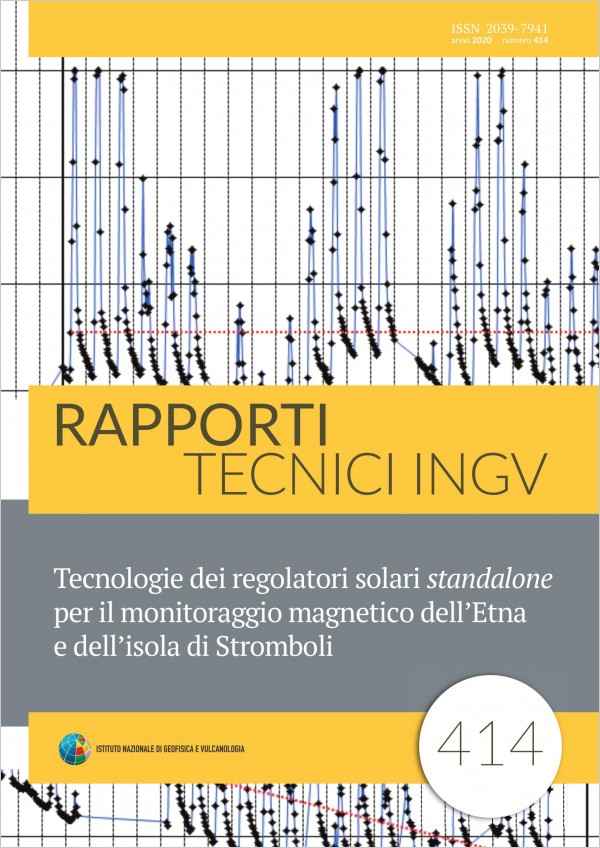Tecnologie dei regolatori solari standalone per il monitoraggio magnetico dell’Etna e dell’isola di Stromboli
Main Article Content
Abstract
Like most monitoring stations, even those belonging to the Etna magnetic network use solar energy to work. The energy system is standalone and therefore formed by an array of solar panels and batteries managed by an electronic charger. At the beginning of 2003, due to the out of production of the regulator used up until then, the BGM10 TYPHOON C.E.P.U. (Efficient Powerful Stable Voltage), the entire network was affected by a forced upgrade that highlighted a weakness never found before. The solar regulator, which seemed similar to many others, turned out to be more unique than rare and its replacement created problems in the following years. Using many regulators and with different characteristics has highlighted the need to tackle the problem seriously. An in depth study has led to a solution that uses common components [Sicali et al, 2016] creating the basis for more effective and controlled maintenance, while at the same time becoming independent of what the market offers. It has also allowed us to classify a new source of noise, allowing it to be identified and eliminated whenever it occurs again. This form of noise was treated very well already by Fois, [2011] and by Benedetti [Benedetti, 2016] who provided a solution replacing the PWM (Pulse Width Modulation) regulator with a linear one. Completely open solutions surely have the advantage of being able to be modeled according to their own needs [Sicali et al., 2016], despite the fact that replacing a regular commercial with a built car is a company that requires a lot of effort. In fact there are applications that require particular functionalities such as load control [Sicali et al., 2013] and the performance of the system, depending on the recharge algorithms, could be compromised.
Article Details
Section
Article

This work is licensed under a Creative Commons Attribution 4.0 International License.

